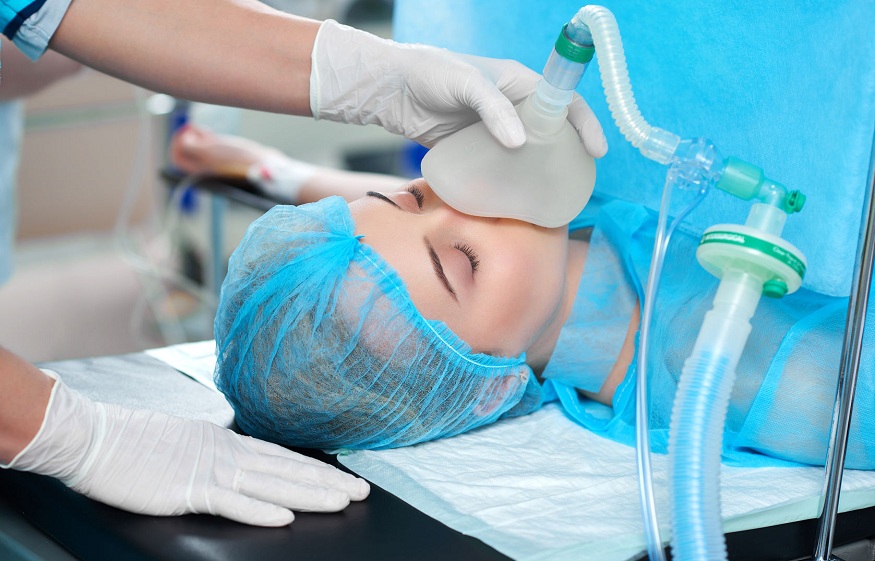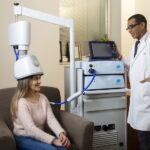1. Type of anaesthesia for child
Although currently, most ophthalmological surgeries are performed under local anaesthesia and sedation, pediatric patients do not tolerate this type of anaesthesia and require general anaesthesia. General anaesthesia aims to put the child ultimately to sleep and keep him in this state during the entire surgery.
Anaesthesia relieves the child’s anxiety, decreases the pain of the operation, relaxes the muscles preventing any movement during the surgery, and removes all memory of the process.
2. How to prepare a child for surgery?
Parents should support children and explain why they are going to have surgery. It is important to tell them that they will receive general anaesthesia, that they will not feel anything, that they will not remember anything and that they will probably feel strange when they wake up.
To help manage uncertainty and stress before surgery, it is good to keep a few details in mind: let him know where you will be during the procedure, answer all his questions, avoid alarmist words and encourage him to ask anything he wants to know, the health personnel are prepared for it before surgery, once they enter the operating room and after the intervention.

3. Can the child eat or drink before the surgery?
The current recommendations of the European Society of Anesthesiology state that children should be encouraged to drink clear liquids (water, juices without pulp) up to two hours before the anaesthetic procedure. The intake of solid food or dairy can be done up to six hours before the process. For infants, breast milk can be given up to four hours before and formula milk up to six hours before any anaesthetic procedure. However, these recommendations may vary from one centre to another, so it must be the Anesthesiology Service that informs you of these guidelines.
4. How is general anesthesia performed in children?
At first, the anesthesiologist will perform what is called induction. This consists of administering a drug that allows the child to go from his normal awake state to a drowsy state. This drug is usually administered as a gas through a mask. This is done because it is normal for most children to find it challenging to sit still and remain calm once in the operating room.
When the child is already asleep, intravenous access is established in a vein in the arm or leg, thus preventing children from being aware of one of their great fears: needles and pricks.
If a complete ophthalmological examination or a short procedure such as lacrimal duct cannulation is to be performed, only the mask can be kept over the patient’s mouth and nose. For all other surgeries, an airway tube is needed to help the child breathe, and anaesthesia can be administered and monitored throughout the procedure. Some drugs are given through this tube as gas, and others through IV access.
The anesthesiologist may use an endotracheal tube (a plastic tube that is placed into the trachea through the mouth or nose) or a laryngeal mask (a mask with a line that is placed in the back of the mouth).
This tube will be removed at the end of the surgery before the child is fully awake. The intravenous access can be removed later, in the recovery phase.
5. What are the most frequent side effects?
When your child wakes up from the operation, they will most likely be disoriented, dizzy, and a little confused. Other common side effects after strabismus surgery are nausea or vomiting, which can usually be relieved with an anti-nausea medication, chills, and throat irritation (due to the use of the tube to help with breathing).
6. What are the risks of general anesthesia?
Nowadays, anaesthesia is very safe. In rare cases, anaesthesia can cause complications in children (such as strange heart rhythms, breathing problems, allergic reactions to medications, and even death).
Most complications, in general, can be prevented simply by providing the anaesthetist with complete information before surgery.
Be sure to report all of your child’s medical problems, recent illnesses, allergies, and medications your child is taking (including vitamins, herbs, supplements, and over-the-counter medications). Also, report any family members who reacted to previous anaesthetics.
7. What happens after surgery in the period of recovery from general anesthesia?
When the surgery is over, the anaesthetist is in charge of reversing the anaesthesia process and helping the child to “wake up”. The tube that has facilitated breathing is removed, and the child begins to breathe spontaneously. You are then moved from the operating room to the recovery room to wake up gradually. Normally the complete recovery process after general anaesthesia is usually 45 minutes to an hour and maybe a little longer depending on the number of drugs administered during surgery.
Although waking up is different for each person, it is normal for your child to feel confused, dizzy, uncomfortable, and sleepy. In addition, she may experience pain that can be relieved with necessary medication.
Typically, most children can go home the same day or the next day and quickly return to normal activities.






Leave a Reply